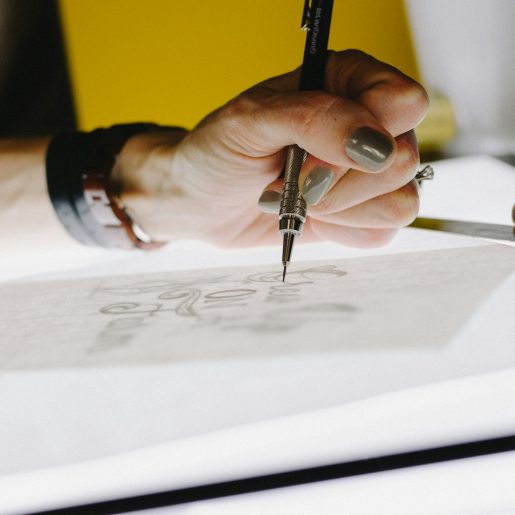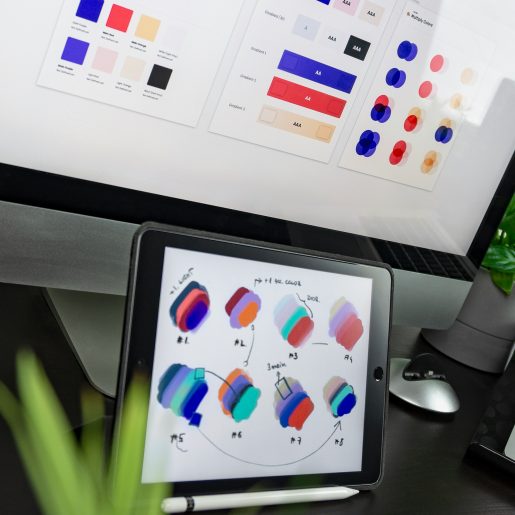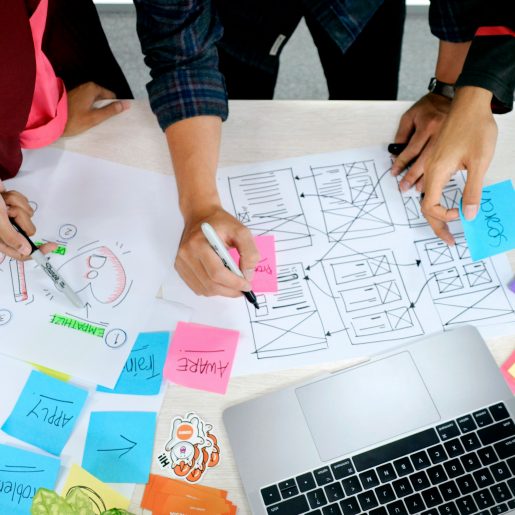Design Thinking: 0 que é? – Conceitos e fundamentos
Design thinking, a problem-solving approach that emphasizes empathy and collaboration, is explored in this article.
Glossário
Exploring the Process of Design Thinking
Design thinking is a problem-solving approach that emphasizes empathy, collaboration, and iterative prototyping. It places the user at the center of the process and aims to create innovative solutions that meet their needs. The process of design thinking can be divided into several distinct stages, each with its own set of activities and goals.
1. Empathize
The first stage of design thinking involves understanding the needs and challenges of the users. Designers engage in research and observation to gather insights into the users’ experiences and identify their pain points. This stage is crucial for developing a deep understanding of the problem and establishing a strong foundation for the rest of the process.
2. Define
Once designers have gained empathy for the users, they move on to the define stage. Here, they synthesize the information gathered during the empathize stage and define the problem statement. This stage helps to narrow down the focus and establish clear goals for the design process. It is important to ensure that the problem statement is aligned with the users’ needs and aspirations.

3. Ideate
In the ideate stage, designers generate a wide range of ideas to solve the identified problem. This stage encourages creative thinking and encourages designers to think outside the box. Brainstorming sessions, visual exploration, and other ideation techniques are commonly employed to generate a large number of ideas. The emphasis is on quantity rather than quality at this stage, as a diverse range of ideas can lead to innovative solutions.
4. Prototype
Once a set of promising ideas has been generated, designers move on to the prototyping stage. This involves creating low-fidelity representations of the ideas, such as sketches, wireframes, or mock-ups. Prototypes are used to test and validate the ideas with users, gather feedback, and refine the design direction. This stage helps to bring ideas to life and make them tangible for evaluation.
5. Test
The final stage of the design thinking process is testing. Designers gather feedback from users on the prototypes and use that feedback to refine and improve the design. This iterative testing and refinement cycle helps to ensure that the final solution truly meets the users’ needs and expectations. Testing can involve usability testing, interviews, surveys, and other methods of gathering feedback.
Applying Design Thinking in Various Contexts
Design thinking has been applied successfully in a wide range of contexts, from product development to service design to social innovation. Its user-centered approach and emphasis on creativity and collaboration make it a versatile methodology that can be adapted to different domains.
Product Development
In the field of product development, design thinking has been used to create user-friendly and innovative products. By understanding users’ needs and constraints, designers are able to design products that are intuitive and enjoyable to use. Design thinking also helps to uncover unmet needs and create breakthrough solutions that set products apart from the competition.
Service Design
In the realm of service design, design thinking has been instrumental in improving user experiences. By taking an empathetic approach and involving users in the design process, service providers can create services that truly address users’ pain points and deliver value. Design thinking can also help to identify opportunities for service innovation and create new service offerings.

Social Innovation
Design thinking is also a powerful tool in the sphere of social innovation. By understanding the needs and challenges faced by disadvantaged communities, designers can develop solutions that have a positive social impact. The user-centered approach of design thinking ensures that the solutions truly meet the needs of the end-users and empower them to lead better lives.
In Conclusion
Design thinking is a problem-solving approach that values empathy, collaboration, and iteration. By understanding the needs and challenges of users, defining the problem, generating ideas, creating prototypes, and testing them with users, designers can create innovative solutions that truly meet the users’ needs. Design thinking has been successfully applied in various contexts, from product development to service design to social innovation, bringing about positive change and better user experiences.
Desenvolva a sua carreira hoje mesmo! Conheça a Awari.
A Awari é uma plataforma de ensino completa que conta com mentorias individuais, cursos com aulas ao vivo e suporte de carreira para você dar seu próximo passo profissional. Quer aprender mais sobre as técnicas necessárias para se tornar um profissional de relevância e sucesso?
Conheça nossos cursos e desenvolva competências essenciais com jornada personalizada, para desenvolver e evoluir seu currículo, o seu pessoal e materiais complementares desenvolvidos por especialistas no mercado!






